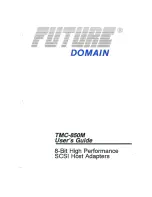
ASUS WLAN Adapter
33
Chapter 5
Chapter 5 - Glossary
Glossary
Ethernet
The most widely used LAN access method, which is defined by the IEEE 802.3
standard. Ethernet is normally a shared media LAN meaning all devices on the
network segment share total bandwidth. Ethernet networks operate at 10Mbps
using CSMA/CD to run over 10-BaseT cables.
Firewall
A firewall determines which information passes in and out of a network. NAT can
create a natural firewall by hiding a local network’s IP addresses from the Internet.
A Firewall prevents anyone outside of your network from accessing your computer
and possibly damaging or viewing your files.
Gateway
A network point that manages all the data traffic of your network, as well as to the
Internet and connects one network to another.
IEEE
The Institute of Electrical and Electronics Engineers. The IEEE sets standards
for networking, including Ethernet LANs. IEEE standards ensure interoperability
between systems of the same type.
IEEE 802.11
IEEE 802.xx is a set of specifications for LANs from the Institute of Electrical
and Electronic Engineers (IEEE). Most wired networks conform to 802.3, the
specification for CSMA/CD based Ethernet networks or 802.5, the specification for
token ring networks. 802.11 defines the standard for wireless LANs encompassing
three incompatible (non-interoperable) technologies: Frequency Hopping Spread
Spectrum (FHSS), Direct Sequence Spread Spectrum (DSSS), and Infrared.
802.11 specifies a carrier sense media access control and physical layer
specifications for 1 and 2 Mbps wireless LANs.
IEEE 802.11a (54Mbits/sec)
Compared with 802.11b:
The 802.11b standard was designed to operate in
the 2.4-GHz ISM (Industrial, Scientific and Medical) band using direct-sequence
spread-spectrum technology. The 802.11a standard, on the other hand, was
designed to operate in the more recently allocated 5-GHz UNII (Unlicensed
National Information Infrastructure) band. And unlike 802.11b, the 802.11a standard
departs from the traditional spread-spectrum technology, instead using a frequency
division multiplexing scheme that's intended to be friendlier to office environments.
The 802.11a standard, which supports data rates of up to 54 Mbps, is the Fast
Ethernet analog to 802.11b, which supports data rates of up to 11 Mbps. Like
Ethernet and Fast Ethernet, 802.11b and 802.11a use an identical MAC (Media
Access Control). However, while Fast Ethernet uses the same physical-layer
encoding scheme as Ethernet (only faster), 802.11a uses an entirely different
encoding scheme, called OFDM (orthogonal frequency division multiplexing).






































